Related Research Articles
Cedric Price FRIBA was an English architect and influential teacher and writer on architecture.

Sir Albert Edward Richardson was a leading English architect, teacher and writer about architecture during the first half of the 20th century. He was Professor of Architecture at University College London, a President of the Royal Academy, editor of Architects' Journal, founder of the Georgian Group and the Guild of Surveyors and Master of the Art Workers' Guild.
Sir John Newenham Summerson, was one of the leading British architectural historians of the 20th century.
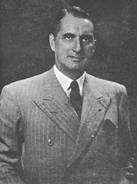
Harold William "Harry" Weedon was an English architect. Although he designed a large number of buildings during a long career, he is best known for his role overseeing the Art Deco designs of the Odeon Cinemas for Oscar Deutsch in the 1930s. Influenced by the work of Erich Mendelsohn and Hans Poelzig – the Odeons "taught Britain to love modern architecture" and form "a body of work which, with London Underground stations, denotes the Thirties like nothing else".
Sir Thomas Penberthy Bennett KBE FRIBA was an English architect, responsible for much of the development of the new towns of Crawley and Stevenage.
Charles Cowles-Voysey was an English architect.
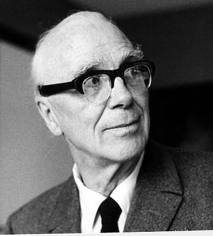
Sir Ove Nyquist Arup, CBE, MICE, MIStructE, FCIOB was an English engineer who founded Arup Group Limited, a multinational corporation that offers engineering, design, planning, project management, and consulting services for building systems. Ove Arup is considered to be among the foremost architectural structural engineers of his time.

Thomas Smith Tait was a Scottish modernist architect. He designed a number of buildings around the world in Art Deco and Streamline Moderne styles, notably St. Andrew's House on Calton Hill, Edinburgh, and the pylons for Sydney Harbour Bridge.

Roderick George Robbie was a British-born Canadian architect and planner. He was known for his design of the Canadian Pavilion at Expo 67 and Toronto's Rogers Centre (SkyDome).
Edwin Maxwell Fry, CBE, RA, FRIBA, FRTPI, known as Maxwell Fry, was an English modernist architect, writer and painter.

Bradshaw Gass & Hope is an English architectural practice founded in 1862 by Jonas James Bradshaw. It is Bolton's oldest architectural practice and has exhibited archive drawings in London and Manchester. The style "Bradshaw Gass & Hope" was adopted after Bradshaw’s death to incorporate the names of the remaining partners, John Bradshaw Gass and Arthur John Hope. As of 2022, the firm continues to operate from offices in Bolton.

Women in architecture have been documented for many centuries, as professional practitioners, educators and clients. Since architecture became organized as a profession in 1857, the number of women in architecture has been low. At the end of the 19th century, starting in Finland, certain schools of architecture in Europe began to admit women to their programmes of study. In 1980 M. Rosaria Piomelli, born in Italy, became the first woman to hold a deanship of any school of architecture in the United States, as Dean of the City College of New York School of Architecture. In recent years, women have begun to achieve wider recognition within the profession, however, the percentage receiving awards for their work remains low. As of 2023, 11.5% of Pritzker Prize Laureates have been female.

Thomas Bickerstaff Harper Ellis was a senior partner in the architectural firm Lyons, Israel and Ellis. The work of Ellis and his partners is noteworthy for both the collection of buildings they designed and for their influence on the group of architects who worked for the partnership. When English Heritage listed one of their buildings in 2006 they described the Lyons, Israel and Ellis partnership as 'one of the most influential post-war practices specialising in education, public housing and healthcare'.
Robert James Potter was an English architect who was noted for his work on church buildings. He studied architecture in London before moving to Salisbury where he established his practice.
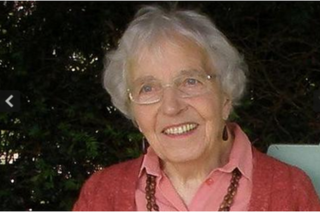
Corinne Marie Gillian Bennett MBE was an English conservation architect. She worked on the restoration and preservation of many historic buildings in England throughout her career, including Winchester Cathedral and the Royal Pavilion. She worked for the National Trust in the 1980s and became the first national cathedrals architect for English Heritage in 1991.
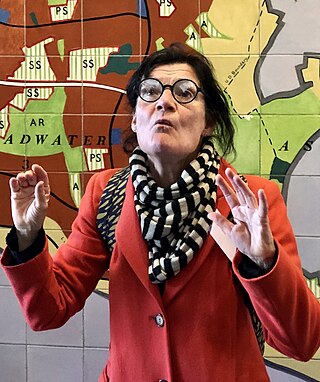
Elain Harwood Hon.FRIBA was a British architectural historian with Historic England and a specialist in post–Second World War English architecture.
Susan Jane Rogers is a British designer and educator. She was a co-founder and partner during the 1960s and 1970s in two architectural practices Team 4 and Richard + Su Rogers. From 1986 to 2011, she was a partner in Colquhoun, Miller and Partners. Rogers was a member of the team that won the design competition for the Pompidou Centre in the 1970s, and she co-designed the concept Zip-Up House in the 1960s. She was also responsible for two notable commissions from her parents: Creek Vean and Pillwood House, which are both Grade II* listed buildings.
John Foster, was an English architect and partner in the architectural practice of Foster & Wood of Park Street, Bristol who designed a number of well known buildings erected in Bristol in the 19th century. "It must sometimes seem that the whole of 19th-century Bristol, or at least all of its significant buildings, owed their design to the firm of Foster and Wood".
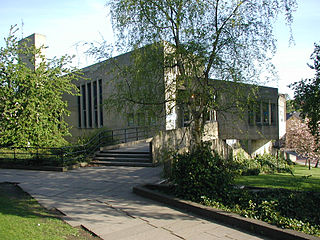
The Architects' Co-Partnership (ACP) is a firm of English architects, founded in 1939 as the Architects' Cooperative Partnership by recent graduates of the Architectural Association School of Architecture. It encouraged teamwork, and set out to be a practice in which all members would be equal.
References
- ↑ "Obituary for John and Elizabeth Eastwick-Field". The Times. 5 May 2003. Retrieved 7 June 2011.
- ↑ John, Stillman (16 April 2003). "Obituary for John and Elizabeth Eastwick-Field". The Guardian. Retrieved 7 June 2011.
- ↑ Nicky, Hirst (1999). "Stillman Eastwick-Field Partnership, London 1999". In Alistair Raphael; Victoria Clarke (eds.). Artists-in-Research 1996-98. London: Institute of International Visual Arts. pp. 36–45.
- ↑ "English Heritage Listing Advice Report (Case UID: 170219)" (PDF). English Heritage. 24 May 2010. Retrieved 7 June 2011.
- ↑ "TP Bennett History" . Retrieved 7 June 2011.
- ↑ "Bennett SEF Ltd" . Retrieved 7 June 2011.
- ↑ Stillman, John; Eastwick-Field, John (1958). The Design and Practice of Joinery. London: The Architectural Press.
- ↑ Lisa, Rigg (27 March 2010). "RIP: demolition begins before English Heritage decides on listing: Workshops by Stillman Eastwick-Field, Morning Lane". The Hackney Society. Retrieved 7 June 2011.